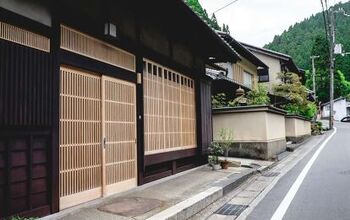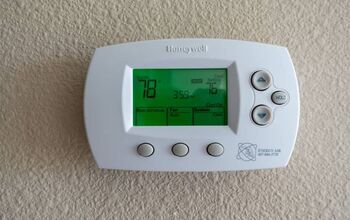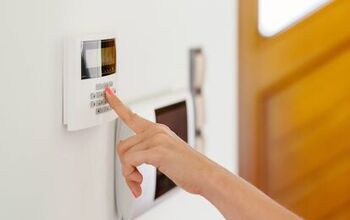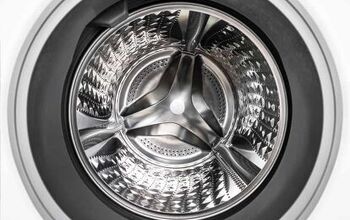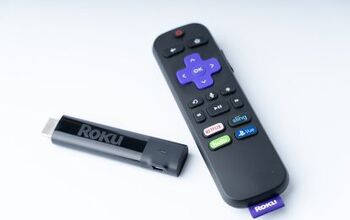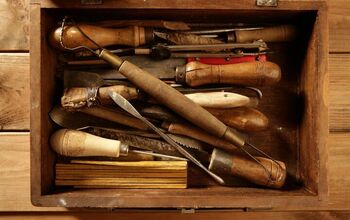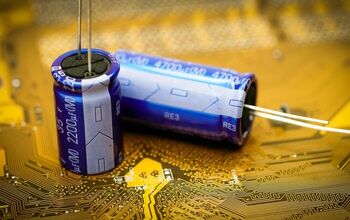Samsung Washer 4E Code: What It Means and How to Fix It

If you’re like most people, you’re grateful for washing machines since you don’t have to wash your clothes by hand. However, when your washer stops working, it can be a huge inconvenience. Luckily, Samsung washers display error codes when they experience issues, so you can hopefully get your machine going again quickly.
If your Samsung washer displays a 4E error code, this signals a problem with the machine’s water supply. Whether you have a top-load or front-load washer, the 4E code means the machine can’t fill with water. Several reasons can cause this error, and once you determine the right one, you can find the proper fix.
Washing machines just might be one of the best inventions on the planet, but they’re not much good without water. If your Samsung washing machine displays a 4E error code, it’s time to dig a little deeper into the issue.
Do You Need Appliance Installation or Replacement?
Get free, zero-commitment quotes from pro contractors near you.

Diagnosing the 4E Error Code on Your Samsung Washer
The 4E error code means something is preventing water from entering your washing machine. Your first step to fixing the issue is figuring out the exact cause since there are several possibilities.
Before starting your investigation, safety first! Turn off the washing machine and remove it from the main power source. Both of these steps are essential to avoid the potential for serious injury.
Note: If your Samsung machine is off but still plugged in, it could still start suddenly. For example, you could hit a button accidentally. Therefore, ensure you unplug your machine.
Things You Might Need During Your Inspection:
- A wire hanger or plumber’s snake
- A flashlight
- A bucket
- A toothbrush
- A screwdriver
- A multimeter
Step One: Try to Restart Your Samsung Washer
Before any further tinkering, wait a few minutes, then power your machine back on to see if the error code disappears. Many washers, especially newer models, can experience a glitch, resulting in an error code for no reason. Powering off and restarting the machine can erase the faulty code and reset the machine; problem solved.
If things don’t go that easily, it’s time to move on to the next possibility.
Step Two: Open the Water Supply Valves to Your Samsung Washing Machine
The place to begin your inspection is your washer’s supply valves. Ensure the valves are completely open to allow for ample water flow.
If the valves are parallel to the pipes, then they should be open all the way. However, if the valves are not fully open, turn them clockwise until they no longer turn. After checking the supply valves, and opening them if necessary, see if the error code disappears. If the code is still there, move on to the next step.
Step Three: Check Both Water Entry Points
A washing machine typically has two inlets for water: hot and cold. There should be a pipe or hose running to each inlet. You might also see the main pipe, then a splitter that directs the water to the two separate entry points.
Regardless of the setup, your machine should definitely have water coming in from both points. Your machine will display the 4E code if water does not come in from both entries. Even if one entry point sufficiently supplies your machine with enough water, you’ll still get the 4E code.
However, if water enters your machine from two entry points, and the 4E code persists, move to step four.
Step Four: Examine the Supply Pipes
If the supply valves are fully open and water is entering the machine through two points, check the supply pipes. It’s essential to ensure these pipes aren’t bent or squished in any way so water can flow freely through them.
A common cause of bent pipes is a machine that is too close to the wall. You might simply need to pull your machine forward a bit to provide more space for the pipes. If this is the case, try to straighten out the pipes by hand.
In some cases, the supply pipes might be cracked or damaged. Typically, you should replace supply hoses every three to five years. But, it’s vital to inspect these hoses once a year.
Washing machine leaks are some of the most common damaging leaks in a house. Note: If you notice your supply hoses are damaged, rusted, or badly bent, replace the hoses. You can purchase new supply hoses for roughly $10 to $50 depending on the length, material, and vendor.
Step Five: Check the Supply Pipes for Clogs
If the supply pipes appear to be in good condition from the outside, it’s time to check the inside of the hoses. There could potentially be something inside the hose, clogging it.
Close the water supply valves and remove the supply hose from the back of the machine. Note: First, place a bucket underneath the hose to catch the water that is still inside the pipe. Before you run water through the pipes, check the mesh screen filters in the supply hoses. You might just need to give the filters a gentle clean with a toothbrush or similar brush.
Next, turn the supply valve back on to let water run through the hose. If water is not flowing freely, then something is likely stuck inside the pipe. See if you can use a wire hanger or plumber’s snake to release the clog.
If this doesn’t resolve the issue, or nothing was clogging the supply pipe, move on to step 6.
Step 6: Check the Drain Hose
Ensure the drain hose is not loose. Plus, you should not insert the drain hose more than 6 inches into the drainpipe. Additionally, the drain hose should be secured to the back of the washing machine with a holder and screw. Do not remove the holder or screw. If the screw is missing, you can replace it with any screw.
However, if the holder is missing, you need to call for service. Verify that all looks good with the drain hose before moving on to the next step.
Step 7: Check the Water Pressure Switch and Hose
It is possible that the small hose connected to the water pressure switch is clogged. Check the hose. If you find a clog, try to release it by blowing through it.
If there is no clog, check the continuity of the wires from the pressure switch to the control board. (Make sure to power off and unplug the machine first). You can use a multimeter for this.
If you feel comfortable, try removing the pressure switch and putting it back. It could be a communication error, and the control board can’t read how much water is coming into the machine. Therefore, you get the 4E code. Or, you might need to replace the water pressure switch. You can usually purchase this part for between $20 and $50 at a parts store or online.
Step 8: Check the Water Inlets
If you have tried all of the above and still see “4E”, then you might need to call a pro. The problem is likely with your Samsung washer’s water inlets.
First, check inside the inlets with a flashlight. You might get lucky and find something clogging the inlet that you can remove easily. However, if not, your inlets likely have an internal clog.
To check this problem, you need to open your washing machine. Make sure the machine is off and unplugged. You need to check the machine’s wiring. Specifically, you need to ensure the wire harness is connected to the water inlets.
If it is, check to see if the solenoid valve is faulty. If it is, replace it, close the machine, and restart. A solenoid valve can cost between $15 and $50. If you don’t want to deal with wiring issues or opening your machine, you need to call a technician.
Are You Using FloodSafe Hoses?
FloodSafe hoses are meant to shut off the water if the valve detects an increase in water flow. For example, if the pipe bursts, the FloodSafe mechanism kicks in and shuts off the water.
While this device might sound like it’s a no-brainer, it’s not a good match for all washing machines. In fact, many repairmen claim to go out on quite a few service calls thanks to these types of hoses.
Samsung specifically states on its website not to use FloodSafe hoses with its washing machines. Therefore, if you happen to have this product on your machine, remove it, and use regular hoses.
Breakdown of Error Code Causes & Solutions
If the above measures you’ve taken have not corrected the problem, you may need a professional repair. The following table outlines the common causes of fault codes, as well as recommended solutions:
| Malfunction | Possible Cause(s) | Solution |
| The washing machine isn’t filling with enough water, or it’s not filling at all. Display reads E1, 4E or 4C error code. | The water inlet valve is unstable. | Replace the inlet valve. |
| When the washing cycle starts, the 4E code, or a similar code, is displayed. | The control unit is faulty. | In most cases, you can correct the problem by soldering the circuit. Though, if the damage is too complex, you may need to replace the unit entirely. |
| When the machine starts up, the 4E code error is shown. | This issue relates to the pressure switch. In most cases, the hose has shifted, clogged, or is damaged mechanically. Though, if the water level sensor is faulty, the 1E error code will appear | Replace or repair the hose. |
| The washing machine does not fill with water. After the cycle starts, the 4E error code appears. | Damage to the wires that connect the water inlet valve to the electronic unit. | Reconnect the wiring or replace the plume. |
Are Error Code 4E and Error Code E4 the Same?
When searching for the reason for a 4E error code on a washing machine, many people incorrectly research E4 error codes. It’s important to understand the difference, as these two error codes are not the same. The codes appear for different reasons.
While a 4E error code indicates an issue with your washing machine’s water supply, an E4 error code signals an imbalance in the drum of the unit. This imbalance may be caused by any of the following:
- Too much laundry in the drum, meaning the acceptable volume is surpassed.
- In some cases, the laundry is too small.
- The contents have formed a ball inside, sticking to the drum.
- Issues with the electronic controller, or faults in components of the machine drive parts.
Do You Need Appliance Installation or Replacement?
Get free, zero-commitment quotes from pro contractors near you.

Related Questions
Are there other error codes that can signal an issue with my Samsung washer’s water supply?
Samsung washing machines feature a number of error codes, and many codes can point to similar issues. When it comes to problems with the machine’s water supply, you might see several codes instead of 4E.
These codes include: nF, 4C, 4E, 14C, E1, or 11E. All of these codes signal an issue with your machine not filling.
How much does it cost to have a washing machine professionally serviced and repaired?
Basically, the cost of repair fluctuates depending on the actual issue with the machine. A simple fix might only cost you about $100, where more complex problems can cost upward of $400. Therefore, always get multiple quotes, especially for any extensive repair. Before paying for any service, make sure your machine isn’t still under warranty. Or, if you are knowledgeable and handy, you might be able to simply purchase parts and do the repair yourself. However, keep in mind that this could potentially void any warranty on your washing machine.Next, consider the age of your current machine. If your machine is older and the repair is costly, you might want to consider purchasing a new washer instead.

Stacy Randall is a wife, mother, and freelance writer from NOLA that has always had a love for DIY projects, home organization, and making spaces beautiful. Together with her husband, she has been spending the last several years lovingly renovating her grandparent's former home, making it their own and learning a lot about life along the way.
More by Stacy Randall










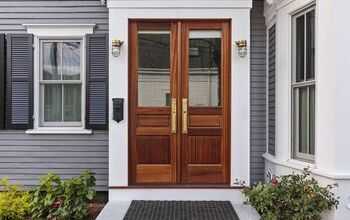
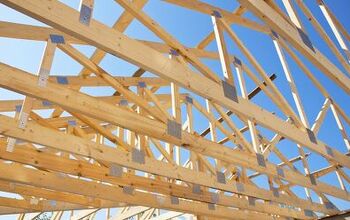
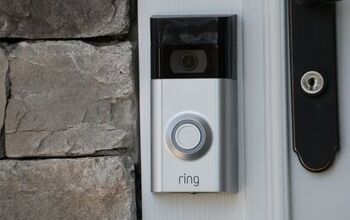
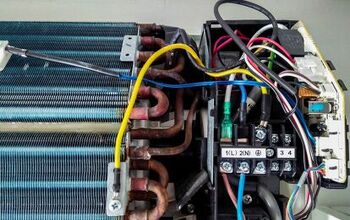
![Finishing Basement Without Permit [Is It Really Illegal?]](https://cdn-fastly.upgradedhome.com/media/2023/07/31/9070078/finishing-basement-without-permit-is-it-really-illegal.jpg?size=350x220)
